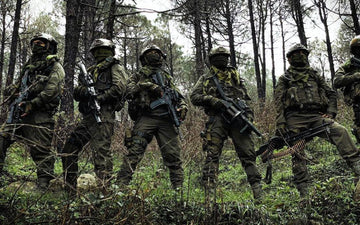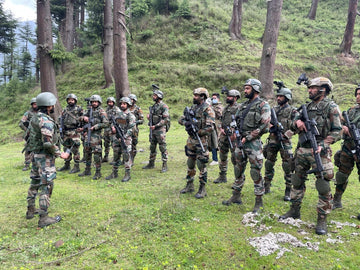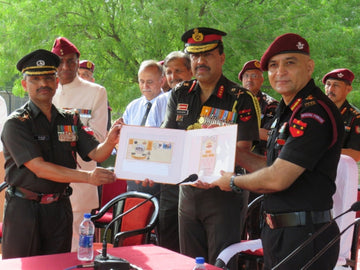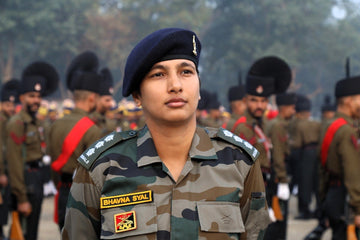Cadets at the National Defence Academy (NDA) in India are molded into future leaders of the Indian Armed Forces through a meticulously structured daily routine that emphasizes discipline, physical fitness, academic excellence, and teamwork. The NDA, established in 1954, stands as a premier institution for training cadets of the Army, Navy, and Air Force. The life of an NDA cadet is a vivid portrayal of commitment, resilience, and a pursuit of excellence that sets the foundation for a career dedicated to serving the nation. This article delves into the daily routine of NDA cadets, exploring each aspect of their life—from breathtaking morning rituals to the bonds forged in the sports fields.
Historical Context
The National Defence Academy was born out of the need to create a unified training institute for preparing future officers of the Indian Armed Forces. With the emphasis on a well-rounded education that encompasses military training, tactical skills, and personal development, the NDA’s foundational philosophy underscores the importance of physical, mental, and moral training to foster leadership qualities. The evolution of the NDA has been remarkable; it has transitioned from merely being a training ground to a dynamic institution that grooms cadets for the rigours of military life and instills a deep sense of patriotism.
The Daily Routine of NDA Cadets
The day of an NDA cadet is filled with structure, discipline, and a variety of activities aimed at holistic development. Here’s a detailed breakdown of their day, illustrated by prayers, sweat, and camaraderie.
Early Morning Routine
The daily cadence commences at the crack of dawn—between 4:00 AM and 5:30 AM, depending on the scheduled events, which may vary through the academic year. The early morning routine serves as a foundation for the rest of the day. Cadets experience a swift wake-up call known as reveille, signaling that it’s time to rise and shine.
- Personal Hygiene: After waking up, there is a small window for personal grooming and preparing for the rigorous day ahead. This includes dressing in their uniforms, which play a crucial role in fostering a sense of belonging and identity among cadets.
Physical Training (PT) and Drill
Starting at 6:00 AM, cadets transition from their rooms to engage in physical training sessions that last until around 8:00 AM. Here, cadets develop not only physical endurance but also a mental toughness essential for their future roles.
- Physical Training Sessions: Endurance runs, pushing through sets of push-ups and sit-ups, and rigorous stretching form the backbone of this training. These exercises are strategically designed to build resilience and promote teamwork.
- Drill Sessions: Following PT, cadets participate in drill practices which hone synchronization and coordination. These sessions typically cover various parade formations essential for military display. Engaging in such drills nurtures discipline and communicates the importance of precision and teamwork.
Breakfast and Academic Sessions
Post-physical training, cadets gather for breakfast around 7:30 AM to 8:30 AM. Breakfast not only serves to replenish energy but also acts as a communal activity fostering camaraderie.
- Academic Learning: Academic classes commence around 9:00 AM, running until approximately 1:00 PM or 1:30 PM. The NDA’s curriculum is expansive, encompassing subjects crucial for a well-rounded military education, such as Mathematics, Physics, History, Political Science, and Military Studies. This emphasis on intellectual development ensures that cadets are prepared for both tactical and strategic roles in the Armed Forces.
Lunch and Afternoon Activities
After an intense morning of academics, cadets break for lunch around 1:30 PM. This meal is typically more than just nourishment—it represents a much-needed pause, allowing for informal exchanges between cadets.
- Games and Sports: The afternoon session from 3:00 PM to 6:00 PM is dedicated to sports activities, which range from football and basketball to volleyball and swimming. Physical activity is not just encouraged; it is mandated as a means of fostering teamwork and enhancing physical fitness. Such activities contribute significantly to the development of leadership qualities and improve team dynamics.
Evening Routine
Following an action-packed day, cadets engage in evening activities that reinforce discipline and academic diligence.
- Study Time: Cadets are allotted time for study from 6:30 PM to 8:00 PM. This segment is crucial as it enables cadets to consolidate their academic learning and prepare for examinations. A well-organized and tidy living space is mandatory, further instilling discipline and accountability.
- Orders Fall In Session: From 8:00 PM to 8:30 PM, cadets gather for a session of orders fall in, where they are briefed on challenges, expectations, and penalties if necessary. This session plays an important role in establishing discipline, order, and a shared sense of responsibility.
- Dinner: Dinner, typically served from 8:30 PM to 8:50 PM, is often a quick affair. Cadets gather together, reinforcing friendships over shared meals, culminating a day filled with physical activity and learning.
Late Evening and Night
As day transitions into night, cadets wind down and engage in supplementary activities.
- Night Physical Activities: From 9:00 PM, cadets have the option to engage in informal games or physical training, allowing them to unwind after a heady day. The emphasis is on relaxation and socialization amongst peers.
- Lights Out: Signifying the end of the day, lights out occurs at 10:00 PM. This ensures that cadets get adequate rest to prepare for the challenges of the next day.
Discipline and Cadet Activities
Throughout their daily routine, discipline stands as a cornerstone of the cadet experience. Cadets learn to balance a myriad of activities while adhering to strict timelines and regulations. This strict lifestyle is critical in fostering leadership qualities and preparing them for the rigors of military service.
-
Drills and Parades:
- Cadets actively participate in intricate drills, instilling a sense of rhythm and unity.
- Parades are not merely ceremonial; they harbor a rich tradition of showcasing discipline and grace.
-
Integrated Activities:
- Activities encourage teamwork, pivotal for cadets who will play leading roles in their future military careers.
- The bond formed during instances of shared trials plays a significant role in developing camaraderie and mutual respect.
-
Extracurricular Activities:
- Cadets partake in various clubs and committees, which cultivate problem-solving skills and leadership capabilities.
- These activities allow cadets to explore interests beyond the military realm, ensuring a well-rounded persona.
Statistical Insights and Research Data
The experiences of cadets at the NDA have far-reaching implications, not just for themselves but for the armed forces at large. Unique statistics underscore the gravity of their training:
- Physical Fitness Standards: Cadets are expected to meet rigorous fitness standards, with physical tests designed to assess endurance, strength, and flexibility. About 81% of cadets reportedly exceed the basic fitness benchmarks set by the NDA, reflecting their commitment to physical excellence.
- Academic Performance: An impressive 92% of NDA cadets score well in the competitive exams they take upon graduation, demonstrating the efficacy of the academic programs in instilling knowledge and analytical capabilities.
Challenges and Solutions in Cadet Life
Despite the structured environment of the NDA, cadets face several challenges that often test their mental resilience and adaptability.
-
Physical and Mental Stress:
- The rigorous training schedule can lead to physical exhaustion and mental stress.
- Solution: Emphasizing mental health support and relaxation techniques can help cadets navigate these challenges effectively.
-
Time Management:
- Juggling academics, physical training, and personal time can be overwhelming.
- Solution: Implementing time management workshops and peer support systems would benefit cadets in balancing their multifaceted responsibilities.
Future Trends and Predictions
As the NDA continues to evolve, certain trends are becoming evident that may redefine cadet life:
- Enhanced Technology Integration: With technology rapidly changing, there is a push towards integrating digital tools into training and education. This could allow cadets to manage their schedules more seamlessly and facilitate better academic performance.
- Mental Health Awareness: Growing emphasis on mental well-being is paving the way for dedicated programs that support cadets emotionally and psychologically throughout their rigorous training schedules.
Conclusion
The daily routine of NDA cadets is not just a series of activities; it is a comprehensive process that shapes future leaders of India’s military. From the earliest hours of the day characterized by precision and discipline to the collective experiences shared during physical training, sports, and camaraderie, each element plays a pivotal role in creating capable, resilient individuals prepared to serve their nation.
As we look to the future, it is crucial to support and evolve the cadet experience to meet emerging challenges and opportunities. The life of an NDA cadet epitomizes dedication, growth, and an unbreakable spirit—a testimony to the essence of what it means to serve with honour and integrity.
For anyone interested in exploring a career trajectory similar to that of NDA cadets, resources and preparation materials can be found at SSBCrack and SSBCrackExams. Their books and online courses are excellent for prospective candidates, offering insights into effectively preparing for the challenges of military training and beyond.





